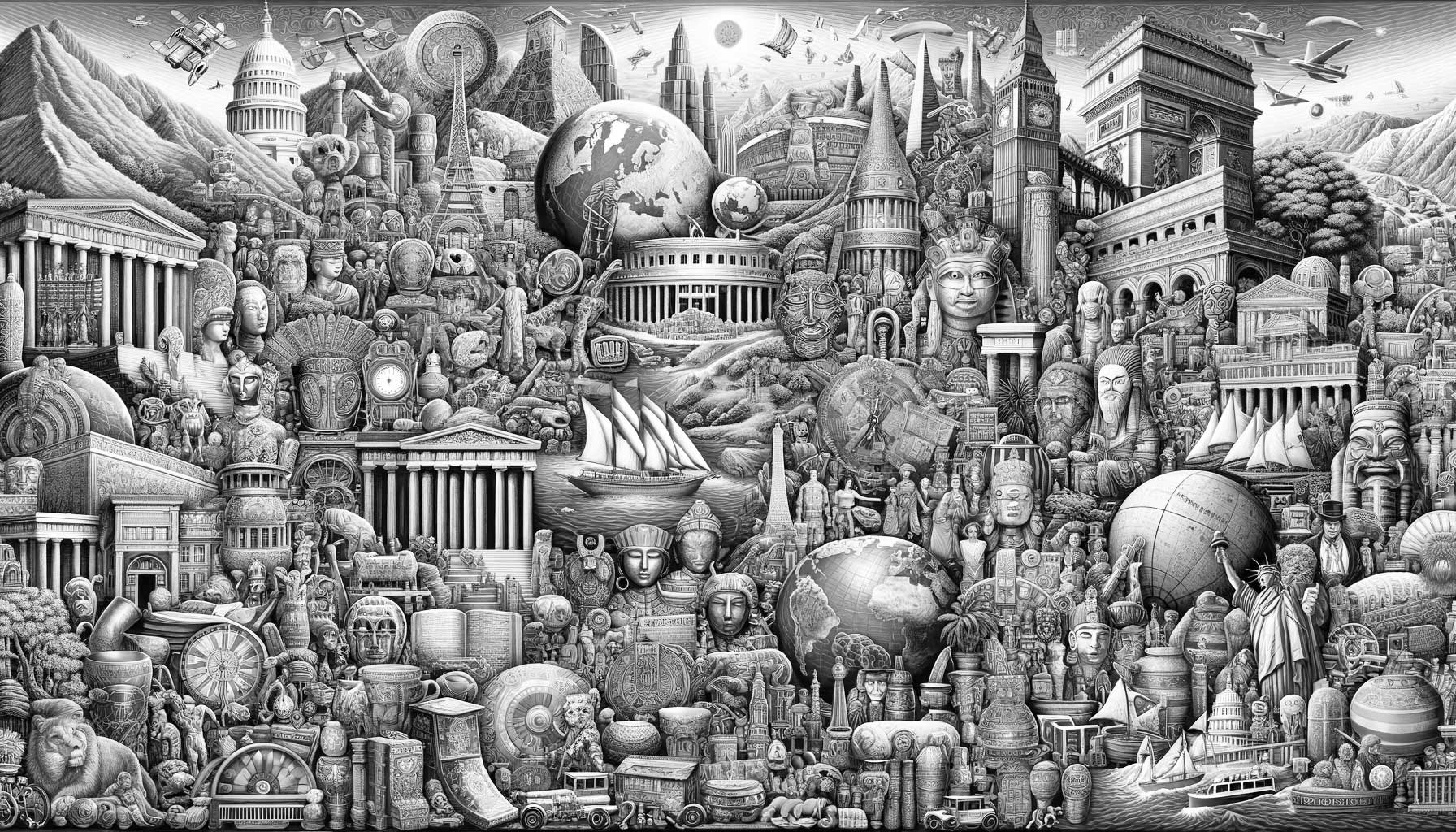Flashback to May 15
World History

On May 15, 1953, Rotterdam, Netherlands witnessed a historic event – the unveiling of Osip Zadkine’s powerful monument, “The Destroyed City.” This monumental sculpture stands as a reminder of the devastating impact of World War II on this vibrant city and its people. With its imposing presence, the monument embodies strength, resilience, and the triumph of the human spirit.
Osip Zadkine, a renowned Russian-born artist, was deeply affected by the destruction he witnessed during a visit to Rotterdam after the war. Inspired by the city’s wartime struggles and the resilience of its inhabitants, Zadkine set out to create a monument that would capture these emotions and serve as a symbol of hope and remembrance.
“The Destroyed City” is a striking bronze sculpture that stands at a height of nearly 6 meters (20 feet). The statue depicts a solitary figure, carved out of the bronze material, with its arms stretched outward, as if in despair or longing. The sculpture symbolizes the pain and suffering endured by the people of Rotterdam, who lost their homes, loved ones, and their city to the devastating bombings.
One notable feature of Zadkine’s monument is the absence of a heart in the figure’s chest. This intentional void represents the emotional emptiness and loss experienced by the survivors of the war. It serves as a poignant reminder of the sacrifices made and the scars left behind by the conflict.
The location chosen for the monument holds historical significance as well. “The Destroyed City” is placed in the center of Rotterdam, near the site where the city’s medieval heart was destroyed during the bombing raids. By installing the sculpture in such a prominent location, Zadkine wanted to ensure that the memory of the war and its impact on Rotterdam would always remain in the hearts and minds of its people.
Over the years, “The Destroyed City” has become an iconic symbol of Rotterdam’s resilience and determination to rebuild and move forward. It has played a vital role in the commemoration of the war and serves as a gathering point for locals and visitors alike to pay their respects and reflect on the city’s history.
In recent times, the monument has also become a popular tourist attraction. Visitors from around the world come to Rotterdam to see this remarkable sculpture and learn about the city’s wartime experience. The presence of the monument has sparked interest in exploring Rotterdam’s history and has contributed to the city’s reputation as a cultural and historical destination.
For locals, “The Destroyed City” is not just a symbol of the past, but also a reminder of the ongoing importance of peace and unity. It serves as a reminder to cherish the freedom and stability that they now enjoy and to work towards creating a better future.
the unveiling of Osip Zadkine’s sculpture, “The Destroyed City,” on May 15, 1953, marked a significant moment in Rotterdam’s history. This powerful monument stands as a testament to the resilience, strength, and spirit of the people of Rotterdam, who endured immense suffering during World War II. As the years have passed, the monument has become an iconic symbol, attracting tourists and serving as a focal point for reflection and remembrance. It continues to hold a special place in the hearts of the people of Rotterdam, reminding them of the importance of peace and unity in the face of adversity.
We strive for accuracy. If you see something that doesn't look right, click here to contact us!
Sponsored Content

English king John names…
On May 15, 1213,…

Dimitri Ivanovitch Russian son…
On 5/15/1591, tragedy struck…

German Peasants’ War ends
On May 15, 1525,…

Dwight Eisenhower, Bernard Montgomery,…
On May 15, 1944,…

Nur ad-Din Mahmud King…
On May 15, 1174,…

Osip Zadkines monument to…
Osip Zadkine's striking monument,…

